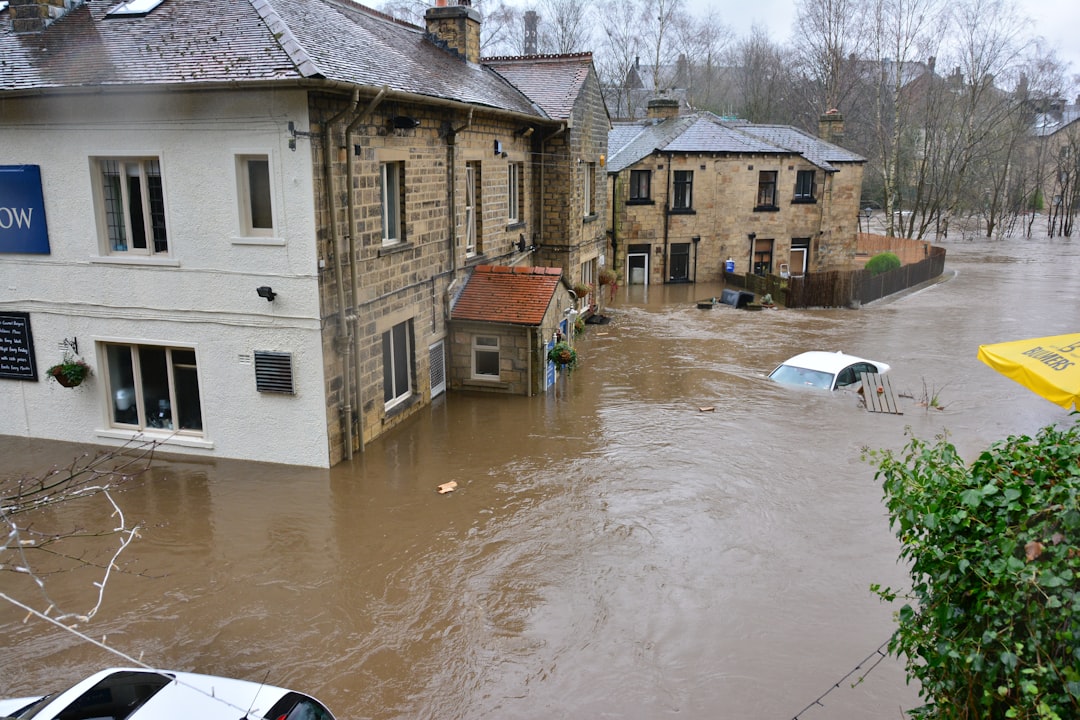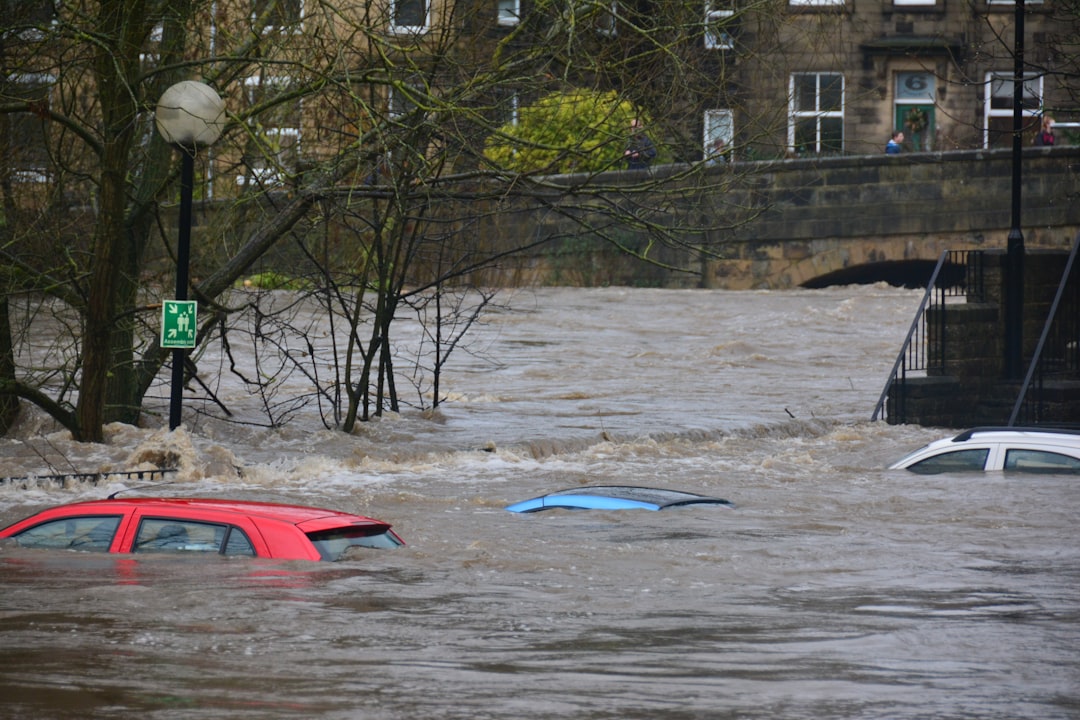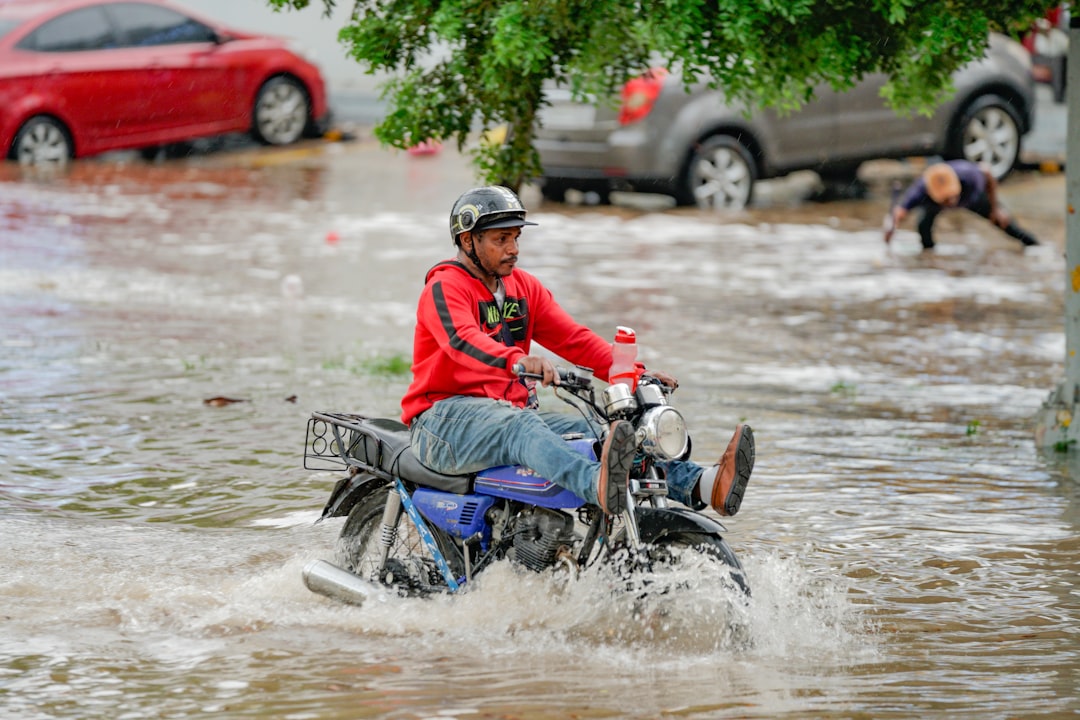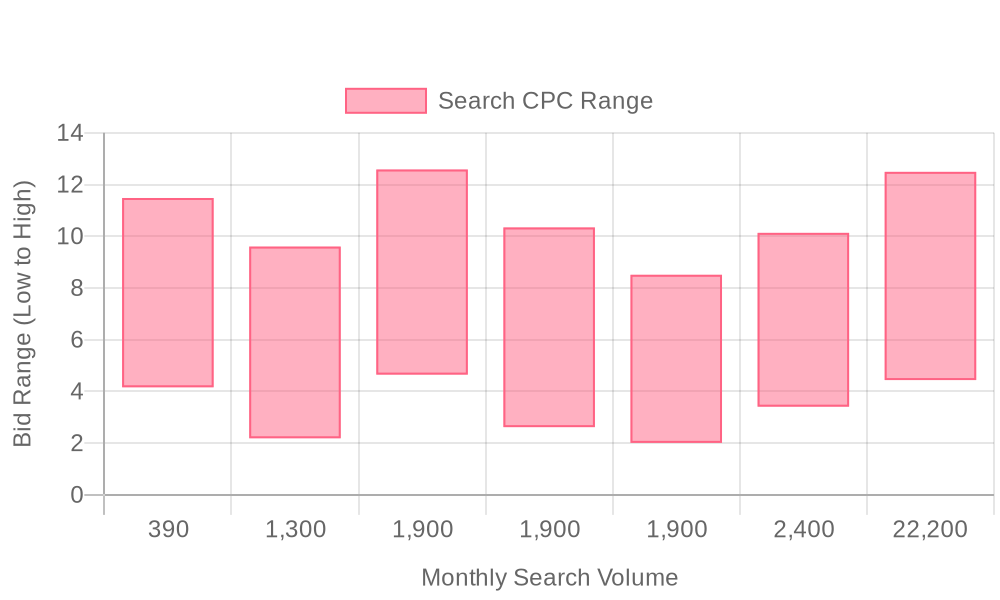
Supercharge your lead generation with a FREE Google Ads audit - no strings attached! See how you can generate more and higher quality leads
Get My Free Google Ads AuditFree consultation

No commitment
Supercharge your lead generation with a FREE LinkedIn Ads audit - no strings attached! See how you can generate more and higher quality leads
Get My Free Google Ads AuditFree consultation

No commitment
Supercharge your lead generation with a FREE Meta Ads audit - no strings attached! See how you can generate more and higher quality leads
Get My Free Google Ads AuditGet My Free LinkedIn Ads AuditGet My Free Meta Ads AuditFree consultation

No commitment
Supercharge your lead generation with a FREE Google Ads audit - no strings attached! See how you can generate more and higher quality leads
Get My Free Google Ads AuditFree consultation

No commitment
In today's evolving digital marketing landscape, Google Ads presents a powerful opportunity for flood insurance companies to attract high-intent prospects exactly when they're searching for solutions. Serving as an essential middle-funnel component, Google Ads helps bridge the gap between online awareness initiatives and direct offline sales efforts. For flood insurance providers, Google Ads not only enhances visibility but also aids in engaging prospects with tailored messaging at pivotal moments in their decision-making. This approach ensures targeted outreach to decision-makers looking for solutions concerning flood coverage specifics. By integrating precise targeting techniques and leveraging data-driven insights, flood insurance businesses can measure ROI effectively from click to contract, ensuring that digital touchpoints translate into offline sales. An example within the context of flood insurance might be engaging local homeowners or businesses searching for immediate coverage solutions during flood season—this is where Google Ads can be a game-changer.

Flood insurance advertisers face unique challenges in connecting with high-intent prospects, where timing and relevance are paramount. Digital-first strategies that leverage Google Ads unlock access to targeted audiences, enabling insurers to align their offers with urgent consumer needs and local risk factors. JEMSU overview provides further context on how Google Ads elevates online presence for insurance providers.
This guide provides a clear, actionable framework for B2B marketers seeking efficient lead generation within the flood insurance sector. Each section focuses on practical steps to optimize campaigns, maximize budget impact, and ensure your ad spend delivers measurable business value.
Successful flood insurance advertising begins with well-defined objectives, such as increasing qualified lead volume, improving conversion rates, or reducing acquisition costs. Analyzing historical performance data and integrating insights from CRM systems help shape these objectives into actionable KPIs. Using unified go-to-market data, marketers can map out the buyer journey and set campaign benchmarks for each stage of the funnel, ensuring that Google Ads activity directly supports broader sales and marketing goals.
Cross-functional alignment between marketing and sales teams ensures that messaging, targeting, and follow-up processes are consistent. When campaign data is seamlessly shared across platforms, teams can quickly identify which channels, keywords, and creative approaches yield the highest ROI, driving continuous improvement in both lead quality and close rates. For more insights on aligning sales and marketing, check out our guide on revenue attribution.
The foundation of effective Google Ads for flood insurance lies in precise keyword targeting and robust audience segmentation. Focus on long-tail keywords such as “affordable flood insurance options,” “flood insurance premium savings,” or “buy flood insurance near me,” which capture high-intent searches and reduce wasted spend on generic queries. Group keywords into tightly themed ad groups based on policy types, risk factors, and geographic locations for better Quality Scores and relevancy.
Advanced audience strategies leverage demographic, geographic, and behavioral signals to reach households or businesses in flood-prone regions. Marketers can refine targeting by layering on data from site visitor identification tools, which reveal the companies and user segments showing in-market intent. Tools like Sona Identification help uncover which organizations are visiting your site, enabling dynamic audience creation and smarter budget allocation.
Landing pages tailored to flood insurance prospects play a critical role in converting clicks into qualified leads. Craft content that clearly addresses coverage benefits, cost savings, and regulatory nuances specific to flood insurance policies. Use conversion-optimized forms that request only essential information, and embed location or risk assessment tools to reinforce value and drive urgency.
Creative assets, including ad copy and visuals, should highlight unique selling propositions and build trust through clear credentials and compliance statements. Integrating real-time behavioral data allows marketers to personalize headlines or calls-to-action based on visitor history, further increasing engagement rates. SiteTuners case study provides a deeper look at landing page experiments that boost conversion rates for insurance advertisers.
Continuous performance monitoring is critical for maximizing the ROI of Google Ads campaigns in the flood insurance space. Leverage advanced conversion tracking solutions that combine online and offline attribution, providing a complete view of which touchpoints lead to closed deals. Automated rules and bid adjustments can shift spend toward top-performing keywords or geographies as real-time intent signals emerge, preventing budget waste and seizing opportunity during weather-driven demand spikes.
Integrating Google Ads data with CRM and marketing automation platforms ensures audiences and conversion events stay synchronized across the funnel. Marketers can retarget high-value website visitors or nurture unconverted leads with tailored offers, while seamless audience sync keeps both sales and ad teams focused on the most promising accounts. This builds on the strategies outlined in our guide to boosting Google Ads ROAS.
In flood insurance PPC campaigns, reaching anonymous website visitors and uncovering their intent is key to scaling lead generation. By deploying advanced visitor identification solutions, marketers can associate anonymous sessions with company-level data, enriching the lead pool and enabling account-based retargeting. Platforms like Sona Audiences are designed to segment and activate high-value visitor audiences for more precise retargeting.
Dynamic audience lists update automatically as leads progress through the funnel, ensuring that retargeting and lookalike campaigns stay relevant and efficient. Marketers can then focus ad spend on segments most likely to convert, reducing acquisition costs and improving sales team productivity. For a clear next step, get started with a custom onboarding to see how these strategies can accelerate your results.

Flood insurance providers face a landscape defined by unpredictable weather, complex regulatory environments, and sporadic demand. Traditional marketing often misses the crucial window when property owners actively search for flood coverage, resulting in missed revenue from high-value prospects.

Flood insurance providers leverage multiple Google Ads campaign types to address the unique dynamics of the insurance buying journey. Each campaign format targets specific moments of intent, awareness, or consideration, ensuring a comprehensive approach to digital marketing for insurance. By integrating advanced data and automation, marketers can optimize every touchpoint, from initial brand exposure to final policy purchase.

Flood insurance marketers seeking to accelerate lead generation and revenue growth must look beyond conventional digital marketing channels. The most successful teams identify untapped segments and intent signals, transforming data into actionable opportunities that drive measurable impact for their pipeline.

Effective audience segmentation unlocks higher ROI for flood insurance campaigns by enabling precise delivery of ads to relevant prospects. Insurance marketers who align segmentation with the full customer journey consistently outperform generic campaigns, boosting both lead quality and conversion rates.
By operationalizing segmentation at each layer—from audience definition to conversion validation—flood insurance marketers create highly targeted, cost-efficient campaigns that adapt to real-world buyer behavior.

| Industry | Keyword | Monthly Search Volume | Competition Level | Low Bid | High Bid |
| Flood Insurance | private flood insurance companies | 390 | MEDIUM | 4.16 | 11.48 |
| Flood Insurance | usaa flood insurance | 1300 | LOW | 2.19 | 9.6 |
| Flood Insurance | private flood insurance | 1900 | MEDIUM | 4.65 | 12.58 |
| Flood Insurance | geico flood insurance | 1900 | LOW | 2.62 | 10.34 |
| Flood Insurance | allstate flood insurance | 1900 | LOW | 2.01 | 8.51 |
| Flood Insurance | progressive flood insurance | 2400 | LOW | 3.41 | 10.13 |
| Flood Insurance | flood insurance | 22200 | MEDIUM | 4.44 | 12.49 |
Flood insurance providers compete in a market where timing and intent drive outcomes. Google Ads for Flood Insurance stands out as a high-yield channel for intercepting decision-makers at the exact moment they search for coverage, translating search demand into ready-to-convert leads. Unlike broader digital marketing for insurance or brand-building on social channels, Google Ads campaigns for flood insurance target prospects who are actively researching policies, comparing quotes, or seeking quick solutions. This precision ensures marketing resources focus on real opportunity, not just awareness.
The foundation of effective PPC for flood insurance is a well-structured keyword strategy. Top-performing campaigns begin with granular research to uncover high-intent, location-specific, and solution-oriented terms. Sample target keywords include "affordable flood insurance," "private flood insurance quote," "best flood insurance providers," and "flood insurance near me." Tightly organizing these terms into relevant ad groups—such as coverage type, property type, or geographic risk—improves ad relevancy and drives higher Quality Scores. For more insights on maximizing results, see the Insurance Ads Guide.
With structured keyword selection and enhanced signal-based targeting, revenue teams maximize every dollar spent on Google Ads for Flood Insurance. Investing in the right keyword mix, supported by unified real-time data, consistently yields stronger lead quality, higher close rates, and measurable growth in policy acquisition. For a deeper dive into optimizing ad spend, explore our guide on Google Ads ROAS.
Google Ads for flood insurance requires a methodical, data-driven approach to attract high-intent prospects and efficiently convert them into qualified leads. Precision in keyword targeting, tailored creative, and seamless integration with sales processes drive measurable results for flood insurance advertising. Revenue teams can further amplify results by unifying real-time buying signals across channels, ensuring every campaign adjustment is informed by holistic funnel data.
Successful PPC for flood insurance starts with comprehensive keyword research and strategic clustering. Grouping keywords by coverage type—such as residential, commercial, or municipal—allows for hyper-relevant ad delivery and more personalized messaging. Localizing keywords with area-specific modifiers, like city names or neighborhood references, ensures your ads reach those facing genuine flood risk. Incorporating long-tail queries captures prospects seeking specific information, such as “NFIP-compliant commercial flood insurance in Houston.” Negative keywords are essential to filter out low-value searches, ensuring only high-intent prospects enter the funnel.
Aligning your keyword strategy with content marketing themes brings consistency across all customer touchpoints. When keyword insights fuel both advertising and educational resources, marketers build authority and improve Quality Scores. Google Ads for agents provides a deeper look at this trend. Teams leveraging unified intent data can dynamically update keyword lists based on shifting search trends and real in-market activity, focusing spend on the highest-converting terms as soon as new patterns emerge.
Effective flood insurance marketing hinges on ad copy that speaks directly to the needs and concerns of your audience. Headlines should address key pain points—such as unpredictable weather or inadequate coverage—with clarity and authority. Trust markers like certifications, years of industry experience, or partnerships with recognized agencies provide reassurance and drive higher engagement. Incentives, such as time-limited discounts or complimentary consultations, create urgency and encourage immediate action.
Ad extensions add depth and value, offering additional links, location info, and direct calls to action. Maintaining consistent messaging across Google Ads, social media, and email campaigns boosts brand recall and trust. For more insights on maximizing Google Ads performance, check out our guide on improve Google Ads ROAS. With advanced audience intelligence, marketers can tailor creative to reflect a prospect’s journey stage, ensuring that first-time searchers and returning visitors see messages most likely to convert them. Real-time insights into user intent enable dynamic updates to ad copy, ensuring relevance even as market conditions shift.
Landing pages for insurance PPC campaigns must deliver a seamless experience from search to conversion. Consistency between keywords, ad messaging, and landing page content minimizes friction and builds trust. Segmenting landing pages by policy type or client profile allows for personalized explanations, calculators tailored to residential or commercial needs, and coverage comparisons that address specific objections. Visual trust cues, such as badges, reviews, or compliance certifications, increase credibility and reduce hesitation.
Interactive tools like premium calculators, FAQs addressing the 30-day waiting period, and clear, responsive CTAs streamline the path to quote requests or policy applications. Integrating form data directly into your CRM ensures rapid, tailored follow-up—eliminating manual lag and preventing lead loss. When platforms sync enriched audience data in real time, teams can nurture high-intent leads immediately, re-engage those who abandon forms, and report on the true pipeline impact of every landing page variation.
Continuous optimization is essential for maximizing the cost efficiency of Google Ads for flood insurance. Tracking multiple conversion types—from quote requests to direct policy sales, both online and offline—provides a complete view of campaign impact. Smart Bidding strategies like Target CPA use machine learning to automatically set bids for each auction, optimizing for conversions at the lowest possible cost. A/B testing of ad variations and landing page elements uncovers what resonates most with each audience segment, improving both click-through and conversion rates.
Importing offline conversions, such as closed deals from phone consultations or broker follow-ups, refines attribution and enables smarter budget allocation. With unified data flowing between ad platforms, CRM, and analytics tools, marketers can pinpoint which campaigns and keywords truly drive revenue. These insights inform not only ongoing campaign tweaks but also broader content and sales strategies, ensuring every channel works in concert to accelerate growth and boost ROI. Solutions such as revenue attribution support accurate revenue tracking across all campaign touchpoints.
Flood insurance marketers who want to scale their digital footprint must prioritize unified data, precise targeting, and ongoing campaign refinement. Executing a high-impact strategy means leveraging every touchpoint across the buyer journey, ensuring your brand remains top-of-mind when risk awareness peaks.
Successfully expanding your flood insurance presence hinges on mastering these interconnected tactics. Marketers who unify their campaign data, continuously refine segmentation, and align messaging across digital channels consistently outperform the competition. By leveraging modern ad platforms and analytics, you can capitalize on every signal, adapt in real time, and achieve measurable growth in lead generation and brand authority.
Mastering Google Ads for flood insurance isn’t just about boosting visibility—it’s about connecting with homeowners who need protection when it matters most. By leveraging the right strategies, you can turn clicks into qualified leads and stand out in a crowded market.
Throughout this guide, we’ve covered the essentials: targeting high-risk areas, crafting compelling ad copy, and optimizing for conversions. Whether you’re refining keyword lists or testing landing pages, these tactics ensure your campaigns drive measurable results while staying cost-effective.
Imagine turning every ad dollar into a high-intent lead—homeowners actively seeking flood coverage, ready to engage with your services. With the right approach, you’re not just running ads; you’re building trust and securing long-term client relationships.
Ready to see how powerful your campaigns can be? Start a free trial to experience Sona's platform and its capabilities.
Best practices include aligning marketing goals with campaigns, developing precise keyword and audience strategies, optimizing landing pages for conversions, and employing performance optimization and cross-channel integration.
Optimize by using precise keyword targeting, robust audience segmentation, conversion-optimized landing pages, and integrating real-time data to adjust bids and budgets dynamically.
The article does not specify the average cost, but emphasizes maximizing budget impact for measurable business value.
Target the right audience by leveraging demographic, geographic, and behavioral signals, and using data from visitor identification tools to refine targeting.
Use long-tail keywords like 'affordable flood insurance options' and 'buy flood insurance near me' to capture high-intent searches and reduce waste on generic queries.
Join results-focused teams combining Sona Platform automation with advanced Google Ads strategies to scale lead generation

Connect your existing CRM

Free Account Enrichment

No setup fees
No commitment required

Free consultation

Get a custom Google Ads roadmap for your business
Join results-focused teams combining Sona Platform automation with advanced Meta Ads strategies to scale lead generation

Connect your existing CRM

Free Account Enrichment

No setup fees
No commitment required

Free consultation

Get a custom Google Ads roadmap for your business
Join results-focused teams combining Sona Platform automation with advanced LinkedIn Ads strategies to scale lead generation

Connect your existing CRM

Free Account Enrichment

No setup fees
No commitment required

Free consultation

Get a custom Google Ads roadmap for your business
Join results-focused teams using Sona Platform automation to activate unified sales and marketing data, maximize ROI on marketing investments, and drive measurable growth

Connect your existing CRM

Free Account Enrichment

No setup fees
No commitment required

Free consultation

Get a custom Google Ads roadmap for your business
Over 500+ auto detailing businesses trust our platform to grow their revenue
Join results-focused teams using Sona Platform automation to activate unified sales and marketing data, maximize ROI on marketing investments, and drive measurable growth

Connect your existing CRM

Free Account Enrichment

No setup fees
No commitment required

Free consultation

Get a custom Google Ads roadmap for your business
Over 500+ auto detailing businesses trust our platform to grow their revenue
Join results-focused teams using Sona Platform automation to activate unified sales and marketing data, maximize ROI on marketing investments, and drive measurable growth

Connect your existing CRM

Free Account Enrichment

No setup fees
No commitment required

Free consultation

Get a custom Google Ads roadmap for your business
Over 500+ auto detailing businesses trust our platform to grow their revenue
Our team of experts can implement your Google Ads campaigns, then show you how Sona helps you manage exceptional campaign performance and sales.
Schedule your FREE 15-minute strategy sessionOur team of experts can implement your Meta Ads campaigns, then show you how Sona helps you manage exceptional campaign performance and sales.
Schedule your FREE 15-minute strategy sessionOur team of experts can implement your LinkedIn Ads campaigns, then show you how Sona helps you manage exceptional campaign performance and sales.
Schedule your FREE 15-minute strategy sessionOur team of experts can help improve your demand generation strategy, and can show you how advanced attribution and data activation can help you realize more opportunities and improve sales performance.
Schedule your FREE 30-minute strategy sessionOur team of experts can help improve your demand generation strategy, and can show you how advanced attribution and data activation can help you realize more opportunities and improve sales performance.
Schedule your FREE 30-minute strategy sessionOur team of experts can help improve your demand generation strategy, and can show you how advanced attribution and data activation can help you realize more opportunities and improve sales performance.
Schedule your FREE 30-minute strategy sessionOur team of experts can help improve your demand generation strategy, and can show you how advanced attribution and data activation can help you realize more opportunities and improve sales performance.
Schedule your FREE 30-minute strategy session





Launch campaigns that generate qualified leads in 30 days or less.
